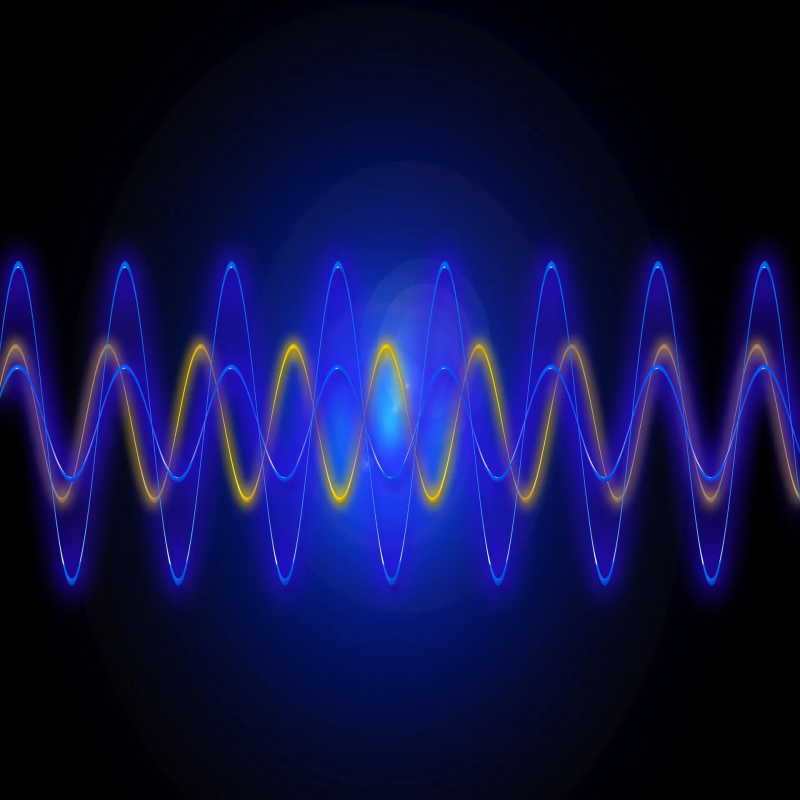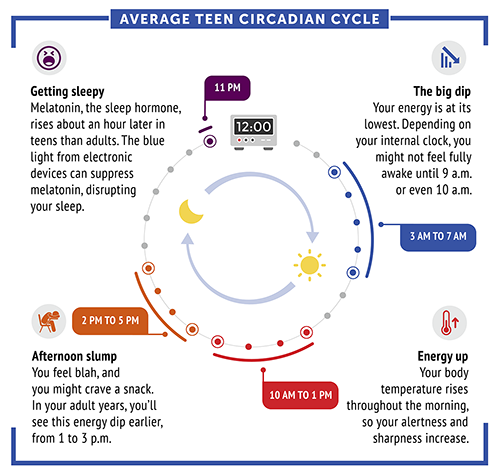
Modern technology has connected the world beautifully in many ways. Large-scale tracing and treatment of diseases wouldn’t have been possible without the help of technology and those who wielded it. However, technology becoming so deeply integrated into our everyday lives has its flipside too. One of the major causes of concern these days is the potential health impacts of EMR and blue light exposure, particularly when it comes to our circadian rhythm.
Circadian Rhythm
The circadian rhythm is the sleep-wake pattern that takes place over the course of 24 hours. Most people begin to notice that their circadian rhythm is not in its best form when it begins to affect their sleep. A part of the hypothalamus in the brain called the suprachiasmatic nucleus (SCN) controls melatonin (the darkness hormone) production. When there is light, there is less melatonin production, so you are in a state of wakefulness, and when there is darkness, there is more melatonin production, which makes you drowsy. A healthy, deep sleep is needed for certain biochemical processes to function effectively.
However, these days, the lines between light and dark are getting very blurred. It looks like day throughout, with artificial lights all around us. We never find ourselves completely in the dark. There’s always a blue light beaming out of our multiple gadgets.
To be precise, blue light is a type of EMF that is visible to the eyes. The radiation emitted from these blue lights, along with the EMR radiation from wireless devices, puts our health at risk.

World Health Organization’s Stance
The effects of electromagnetic fields (EMFs) on people's health are still being discussed around the world. The World Health Organization (WHO) started looking into this topic in 1996 with the EMF Project. The WHO says there's no proof that low-level EMFs are dangerous to people, even after lots of research. However, some other scientists disagree and have found evidence that EMFs, including blue light, might be harmful to our health.
Sources of EMF and Blue Light Radiation
EMF Radiation: Electrical wiring around our homes and offices, high-voltage power lines, microwave ovens, computers, cell phones, hair dryers, electrical shavers, etc.
Blue Light Radiation: Flat-screen LED televisions, computer monitors, fluorescent lights, CFL (compact fluorescent light) bulbs, LED lights, smartphones, tablet screens, Wi-Fi routers, and other smart devices.
Health Impacts of EMF Radiation
First, let’s see the impact of EMF radiation on our well-being.
Neurological Problems: EMR impacts our nervous system the most. Various studies indicate that there is a link between EMR and developmental disorders like autism and ADHD. It has been found that wireless and electromagnetic fields play a role in altering brain function. EMFs are found to affect communication between cell membranes by impacting voltage-gated calcium channels. This can interfere with processes like muscle function, neurotransmitter function, gene expression, changes in blood pressure and heart rate, etc. When neurotransmitter function is affected, it can cause problems in the production and regulation of the hormones serotonin and dopamine. These play an important role in focus, attention, mood, and memory. Studies on animals have found that EMR causes damage to the brain’s myelin sheath, leading to hyperactivity, a symptom of ADHD.

EMF radiation can harm the molecules within cells and upset the balance of ions. This can cause oxygen molecules to create dangerous by-products called reactive oxygen species (ROS), or free radicals, which can damage cells and their components, such as proteins, lipids, and mitochondria, and even cause toxic damage to DNA (genotoxicity). EMF radiation can also weaken the blood-brain barrier. The body's natural antioxidant defense system, which normally protects against free radicals, can be negatively affected by EMF radiation.
Constant exposure to EMF and blue light can be harmful to the developing brains of children. It can also affect their gut health and immunity. The gut-brain axis theory explains how the gut and brain are interconnected.
Some studies suggest a possible link between EMF radiation and neurodegenerative diseases like Alzheimer’s and Parkinson’s.
Cancer: As mentioned above, long-term exposure to EMR can cause DNA damage. This can cause various types of cancer, including brain tumors, breast cancer, and leukemia.
Reproductive Problems: EMR has been linked to reproductive problems. Studies done on animals have reported the death of the male germ cell, changes in the estrous cycle (the reproductive cycle in rodents is similar to the menstrual cycle in women), and the weight of reproductive organs. It was also shown to affect sperm motility, the development of the embryos, and the success of a pregnancy. More studies on this topic are required.
Electromagnetic Hypersensitivity (EHS): EHS is a condition where individuals experience symptoms such as headaches, fatigue, stress, nausea, and sleep disturbances. Some people have skin symptoms like prickling, burning sensations, rashes, and pain in their muscles. EHS is not a recognized medical condition yet.

Cardiovascular Problems: EMR has been linked to cardiovascular problems such as arrhythmias and hypertension. Studies have shown that exposure to EMF radiation can affect the function of the heart and blood vessels.
Immune System Problems: EMR can also affect the immune system and cause problems such as allergies and autoimmune diseases. They have also been known to increase inflammatory responses and slow down the process of tissue repair.
Other Health Impacts of Blue Light Radiation
Blue light has the shortest wavelength and keeps our brains active and alert. Blue light affects melatonin production and can lead to insomnia, lack of energy during the day, obesity, heart problems, and even depression.
Apart from disrupting our sleep, blue light can also negatively affect our eyes. Digital eye strain is a common phenomenon these days and can lead to dry eyes, dizziness, and blurred vision. It has also been found to be responsible for damage to cells in the retina and thus macular degeneration, which leads to vision loss among the elderly. Cataracts and eye cancer have also been related to blue light radiation.
What Can You Do to Protect Yourself?
Here are steps to protect ourselves from the negative effects of EMF and blue light radiation.
- Limit your screen time: Make sure to close your eyes and relax for some time each time you use your screens for longer periods of time.
- Use Protective Devices: EMF blocking cases for smartphones and tablets, blue light blocking glasses, or filters on your electronic devices are available on the market to reduce your exposure to blue light. Use wired earphones instead of Bluetooth headsets at night.
- Distance Yourself From Electronic Devices: Avoid sleeping with your smartphone or tablet next to your bed. Sleep at a proper time.
- Use the Night Mode Setting: Most electronic devices now have a night mode setting or dark theme that you can use to reduce the disruption to your circadian rhythm, relax your eyes, and improve your sleep.
Conclusion:
While we cannot live in a bubble when it comes to EMF radiation, including blue light radiation, we can certainly take steps to reduce their effects on our lives. One of the most important steps is to keep our devices away from us when we sleep so that melatonin hormone levels remain balanced and our circadian rhythm is maintained.


.png)


